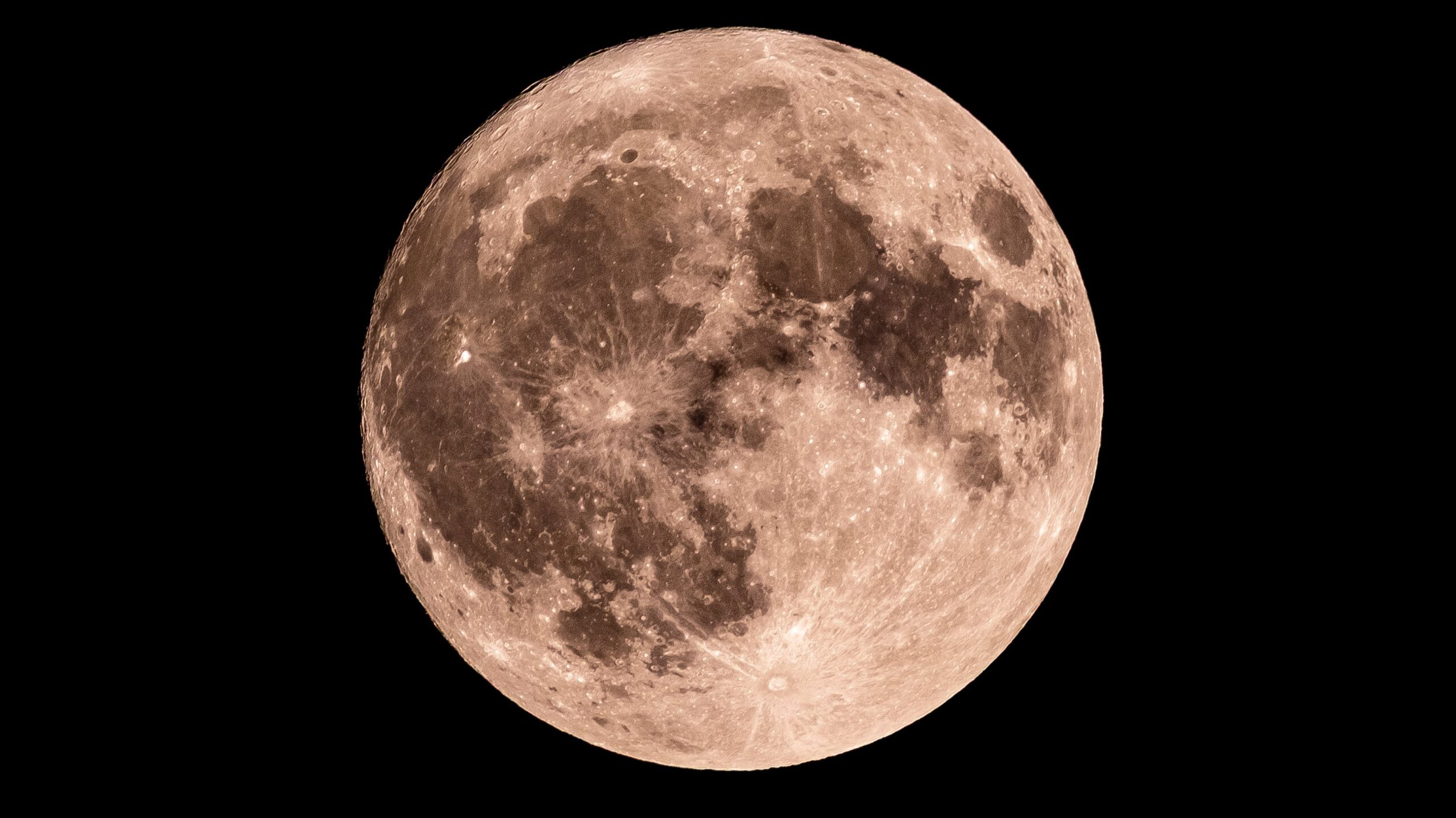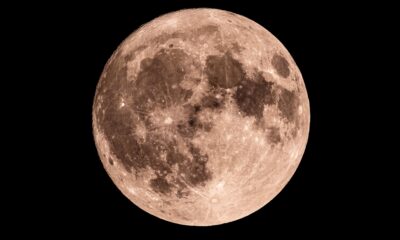Science
Discover the Waning Gibbous Moon Tonight, October 10

The Moon is prominently visible tonight as a **Waning Gibbous**, illuminated at approximately **84%**. This phase occurs on **October 10**, 2023, offering spectators a chance to observe its fascinating surface features. The lunar cycle, which lasts about **29.5 days**, dictates the Moon’s various phases, transitioning from new to full and back again.
As the Moon orbits Earth, its appearance changes based on the relative positions of the Sun, Earth, and Moon. During the **Waning Gibbous** phase, the right side appears to lose light, while the left side remains illuminated. This provides a unique opportunity for stargazers to identify various geological features on the Moon’s surface.
Exploring the Moon’s Surface
Tonight’s viewing conditions are excellent for spotting significant lunar landmarks. With the naked eye, observers can easily identify the **Oceanus Procellarum**, **Mare Serenitatis**, and **Mare Tranquillitatis**. Those equipped with binoculars can enhance their experience by viewing the **Grimaldi Basin**, **Mare Humorum**, and the **Gassendi Crater**. For those using telescopes, additional features such as the **Rupes Altai**, **Fra Mauro Highlands**, and **Rima Hyginus** become visible.
NASA’s Daily Moon Observation provides comprehensive information on the lunar phases and highlights the dynamic nature of the Moon’s visibility. This regular orbit causes varying amounts of sunlight to illuminate its surface, creating the different phases we observe.
Understanding Moon Phases
The eight primary phases of the Moon include:
– **New Moon**: The Moon is positioned between Earth and the Sun, rendering it invisible.
– **Waxing Crescent**: A small sliver of light appears on the right side.
– **First Quarter**: Half of the Moon is illuminated on the right side.
– **Waxing Gibbous**: More than half is lit, but it is not yet full.
– **Full Moon**: The entire face of the Moon is visible and fully illuminated.
– **Waning Gibbous**: The Moon starts to lose light from the right side.
– **Last Quarter**: The left side is illuminated, creating another half-moon appearance.
– **Waning Crescent**: A thin sliver of light remains before the Moon goes dark again.
The next full moon will occur on **November 5, 2023**, providing another opportunity for Moon enthusiasts to enjoy a fully illuminated lunar experience.
The intricate dance of the Moon around Earth continues to captivate observers. Each phase presents a unique perspective, reminding us of the beauty and complexity of our celestial neighbor.
-

 Entertainment1 month ago
Entertainment1 month agoAnn Ming Reflects on ITV’s ‘I Fought the Law’ Drama
-

 Entertainment2 months ago
Entertainment2 months agoKate Garraway Sells £2 Million Home Amid Financial Struggles
-

 Health1 month ago
Health1 month agoKatie Price Faces New Health Concerns After Cancer Symptoms Resurface
-

 Entertainment2 months ago
Entertainment2 months agoKim Cattrall Posts Cryptic Message After HBO’s Sequel Cancellation
-

 Entertainment1 month ago
Entertainment1 month agoWhere is Tinder Swindler Simon Leviev? Latest Updates Revealed
-

 Entertainment2 months ago
Entertainment2 months agoMasterChef Faces Turmoil as Tom Kerridge Withdraws from Hosting Role
-

 Entertainment3 months ago
Entertainment3 months agoSpeculation Surrounds Home and Away as Cast Departures Mount
-

 World1 month ago
World1 month agoCole Palmer’s Mysterious Message to Kobbie Mainoo Sparks Speculation
-

 Entertainment1 month ago
Entertainment1 month agoITV’s I Fought the Law: Unraveling the True Story Behind the Drama
-

 Entertainment1 month ago
Entertainment1 month agoCoronation Street’s Carl Webster Faces Trouble with New Affairs
-

 Entertainment3 weeks ago
Entertainment3 weeks agoCaz Crowned Winner of The Great British Sewing Bee, Overjoyed by Triumph
-

 Entertainment2 months ago
Entertainment2 months agoAldi Launches Cozy Autumn Fragrance Range Ahead of Halloween





















